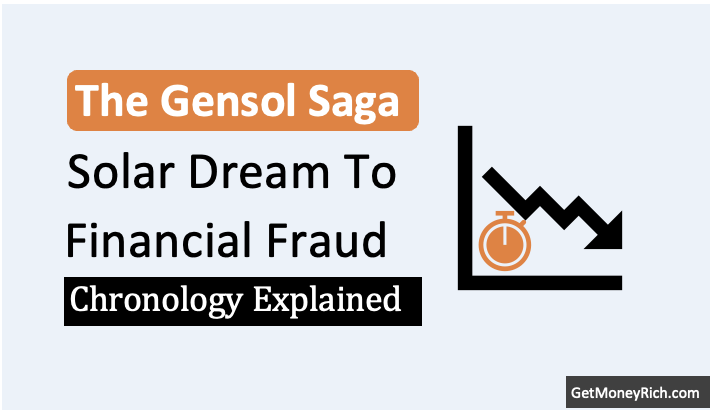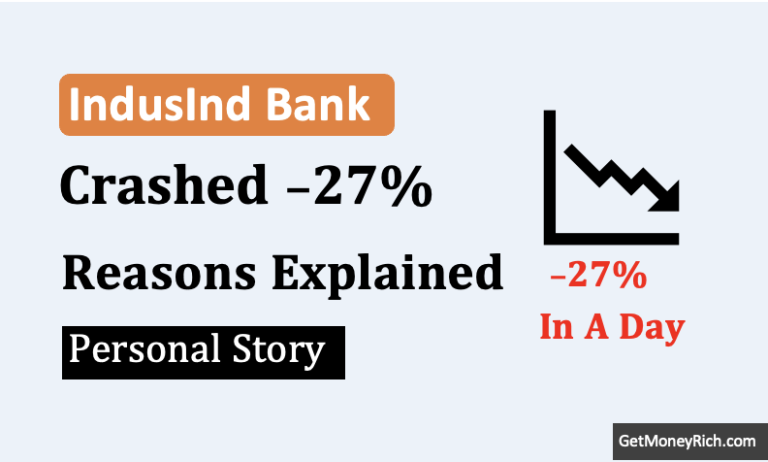[Date: 27-Jan-2025] It’s been a rough week for CDSL investors, hasn’t it? The stock has been on a downward spiral, and I know many of you are wondering what exactly is going on. Till few weeks back, this stock was referred as one of the monopoly stocks of the Indian stock market, and today it saw this kind of beating. I’ve dug deep into the recent news and would like to declutter this stock-meltdown episode for you. I’ll also share the reason for the CDSL’s price collapse and also share with you my perspective on what it means for the market when a company like CDSL does so poorly.
Let’s face it, seeing a stock you own, especially a seemingly stable one like CDSL, take a nosedive can be unsettling. So, let’s get straight to the point.
The Numbers Don’t Lie: A Disappointing Quarter
The primary trigger for this sharp correction is undoubtedly CDSL’s less-than-stellar Q3 FY25 results.
Here’s a simplified breakdown of what spooked the market:
- Profit Plunge: The most significant blow was a substantial 39% year-on-year (YoY) drop in net profit. CDSL reported a net profit of Rs.105 crore in Q3 FY25, a significant fall compared to the Rs.171 crore they made in the same quarter last year. This is a massive drop and no investor wants to see such sharp falls in profits.
- Revenue Decline: The company’s operating income also took a hit, falling 11% YoY to Rs.221 crore. This means the core business isn’t generating as much income as it was last year.
- EBITDA Erosion: EBITDA is a key measure of profitability. It fell a staggering 37% sequentially, from Rs.231 crore in Q2 FY25 to Rs.146 crore. This indicates a sharp drop in operating efficiency in the last quarter.
- New Account Slowdown: The number of new demat accounts opened in Q3 was 92 lakh. It was less than the 1.18 crore in Q2. This is the lowest number of new accounts opened since Q4 of the previous fiscal year. A slowdown in new account additions signals a potential plateau in their growth and it is a big red flag for any growth seeking investor.
- Demat Custody Drop: The total value of securities held in demat accounts (demat custody) also saw a slight dip. It fell from Rs.78 lakh crore to Rs.75 lakh crore. While seemingly small, it suggests that either people are selling off or the valuation of the market has dropped in the quarter.
Why Are These Numbers a Problem?
Now, you might be thinking, “Okay, so the numbers are down, but why is the stock price reacting so dramatically?”
Here’s the thing: the stock market is forward-looking. Investors are not just concerned about what happened, but more about what could happen.
- Growth Expectations: CDSL had been enjoying a period of rapid growth, fuelled by the increasing participation of Indian retail investors in the stock market. The high growth rate had been priced into the stock. These results indicate that this rapid growth may not be sustainable and this has led to a big correction in valuation.
- Profitability Concerns: The sharp drop in EBITDA and net profit is a major worry. It suggests that the company might be facing either increasing costs or its operations is no more generating the same level of revenue as before. As investors hate uncertainty, a major decline in profitability like this can cause deep stock price corrections.
- Market Sentiment: The slowdown in new account openings is also a signal that the growth frenzy that we saw in the last 2-3 years has lost its steam. It indicates a possible slowing down in the growth of market participation. This has led to a negative sentiment among investors causing large scale selling in this stock.
The Domino Effect
The market’s reaction is a bit of a domino effect.
When a company like CDSL, which plays a crucial role in the market ecosystem, falters, it raises concerns for other players as well.
The articles I read mentioned that other capital market stocks, like 360 One WAM and Angel One, also saw a sell-off.
It shows that the entire industry is connected and they are all vulnerable.
What Does This Mean for the Indian Market?
I see a few important things reflected in this CDSL crash.
- No Stock is a Sure Thing: First and foremost, it is a stark reminder that no stock, no matter how strong or seemingly monopolistic, is immune to market corrections. CDSL, being the only depository, should have been least impacted. Yet, that did not happen. The market always finds out excesses and the stocks always go through correction when the excesses are corrected. You can read here about some monopoly stocks of the Indian market.
- Valuations Matter: Secondly, it shows that when a stock has very high valuations, any small negative event can trigger a panic selling. A lot of growth expectations was already priced in CDSL stock price. When the growth started to slow, the market punished the stock. Read about the strategy of investing in high P/E stocks.
- Market Maturity: In a way, this is also a sign of a maturing market. The Indian market, with its huge retail participation now, is reacting more swiftly to negative news. The market is becoming more mature and efficient. Increased retail participation leads to faster information processing and more immediate price adjustments. This heightened responsiveness suggests a market that’s moving towards greater efficiency, where mispricing are corrected more rapidly than in the past.
- Reality Check for New Investors: For the new investors who entered the market over the past 2-3 years, this correction is a much needed reality check. The market is not a one way street. It goes up and down. We should not get carried away by the euphoria. We should be ready to face the reality and learn about true investing.
Conclusion
Patience and perspective are key.
The CDSL stock crash is a lesson for all of us. It reminds us to be cautious, do our due diligence, and not get swept away by hype.
It also highlights the importance of long-term investing. Read about the benefits of holding stocks for the long term.
We need to know our companies and must keep monitoring their financials. For long-term investors, this might be an opportunity to average down if you truly believe in the long-term potential of the company.
However, do it only after a deep analysis of the company’s fundamentals.
Don’t panic, stay informed.
If you found this article useful, please share it with fellow investors or leave your thoughts in the comments below!
Have a happy investing.






